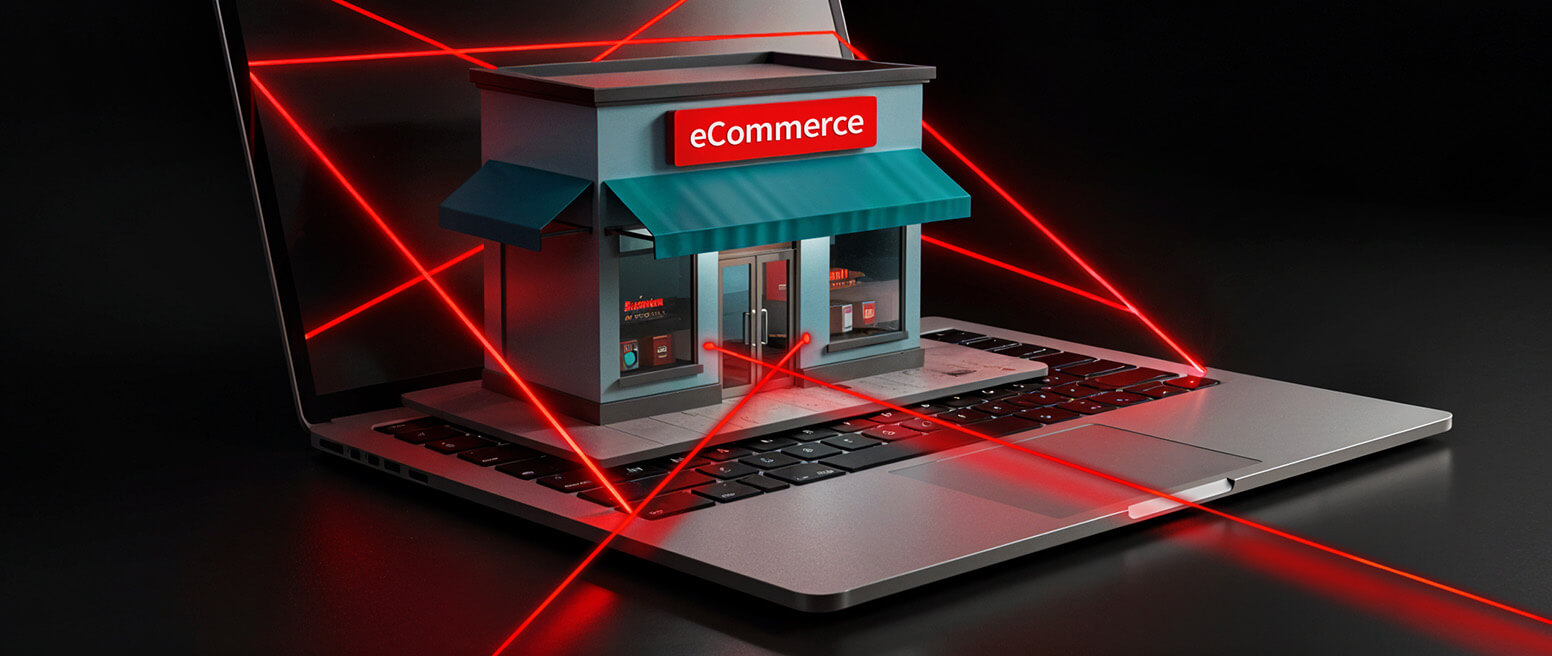The Top 8 Dropshipping Scams Impacting the Market & What to Do About Them
The dropshipping model has become a very popular option for sellers looking to launch a business without running up debt to buy and store inventory. The appeal extends beyond this small group, though.
Dropshipping is gaining a foothold in the market at every level, from “work-from-home” sellers running a Shopify site to major global chains like Walmart. Many businesses are taking advantage of this hyper-efficient, low-risk strategy.
However, as with any great idea, there are inevitable downsides. Dropshipping is very popular with fraudsters happy to relieve you of your hard-earned cash without contributing anything of value in return. And, these dropshipping scammers can bleed you dry very quickly if you’re not careful.
Learn more about dropshipping
Recommended reading
- The Top 10 Fraud Detection Tools You Need to Have in 2025
- Reverse Email Lookup: Tips, Tools & How to Detect Fraud
- ECI Indicators: How to Understand 3DS Response Codes
- How Link Analysis Works: Data Points & Best Practices
- Credit Card Fraud Prevention: A Gameplan for Businesses
- eCommerce Fraud Prevention: A Step-by-Step Guide for 2025
Is Dropshipping a Scam?
Not at all. Dropshipping is a legitimate practice that’s been around for decades. And, it’s now more popular (and profitable) than ever. As of 2022, more than one-quarter of online retailers engaged in dropshipping in some form.
The most recent statistics suggest that the worldwide dropshipping market is anticipated to hit $243.42 billion in 2023. This comes after a substantial 23.7% surge from the numbers recorded in 2022, and marks the first time it's tipped over the $200 billion threshold.

But, that's still just the start. Projections indicate that this upward trend isn't slowing down anytime soon. The dropshipping market size is poised for additional expansion, with forecasts predicting it to reach $301.11 billion in 2024, rise to $372.47 billion in 2025, and make a substantial leap to $476.1 billion by 2026.
Sounds impressive. But then, why does dropshipping have a somewhat negative reputation?
Why Does Dropshipping Have a Negative Reputation?
Dropshipping can sometimes be viewed as a scam due to its association with various fraudulent activities.
Remember: with dropshipping, you effectively outsource all facets of order fulfillment to your supplier. This can lead to a lack of oversight, which can mean trouble if your supplier is unreliable.
Some disreputable suppliers might deliver substandard products, for instance. Or, they might ship orders late, or not fulfill them at all. Regardless, when customers receive poor-quality products or experience delivery issues, they blame the retailer since that's who they bought from, even if it's the supplier's fault.
In this way, dropshipping scams can lead to costly chargebacks for you. You might see chargebacks resulting from:
Product Quality Scams
A customer receives a product of lower quality than expected, based on the product description and images on your website. In response, they may initiate a chargeback through their credit card company for not receiving the item as described.Shipping Delays
The supplier takes longer than expected to ship the product, or fails to ship it at all. The customer may then file a chargeback for not receiving the item within the expected timeframe.Substitute Products
The supplier sends a product that is different from the one that was ordered by the customer (i.e. a bootleg or knockoff product). The customer may then file a chargeback for receiving the wrong item.Out-of-Stock Scams
Your supplier allows you to sell a product that they don't actually have in stock at that moment. The delay or inability to fulfill the order may result in a chargeback.Yes, the problem was caused by the supplier in each of these cases. Regardless, it's you, the merchant, who faces the financial consequences.
Your customers are making purchases with you, not with your supplier. So, you’re ultimately held responsible for ensuring that the product is delivered as promised.
The Top 8 Dropshipping Scam Tactics & How to Avoid Them
The internet is teeming with suppliers. However, it's important to remember that they aren't all trustworthy. Let's delve into some of the most common dropshipping scams, and equip you with some handy tips to help you identify and avoid them:
10 General Tips to Prevent Dropshipping Scams
Now that we have a better understanding of how to spot and avoid specific dropshipping scams, let’s take a broader view of the topic.
Modern fraud prevention is more than the sum of its parts. To really protect your business, you need to adopt multilayered strategies that address a host of inefficiencies and liabilities that could be built into your business practices.
To that end, here are 10 general tips to help you prevent dropshipping fraud, as well as other threats:
#1 | Vet Your Suppliers Thoroughly
Always research your suppliers before deciding to work with them. Look for reviews or references from other businesses, verify their business registration and contact information, and make sure their website is professional and secure. Also, consider their business practices and how transparent they are about them.
#2 | Always Order Samples
Ordering samples of the products your customers will receive is a good way to check the quality of the product. You should also evaluate the packaging, as well as shipping times. It will give you an idea of what your customers will experience.
#3 | Secure Payment Methods
Using secure payment methods can provide some level of protection and recourse if you become a victim of a scam. PayPal, for example, has seller protection policies in place for some transactions.
#4 | Legal Considerations
Make sure you have legal protection in place. This can include having a lawyer review your supplier contracts. Or, it could mean using a legally vetted template and ensuring you’re in compliance with all applicable laws and regulations.
#5 | Establish Clear Communication
Make sure you have a solid line of communication with your supplier. Regularly check in with them about product availability, shipping times, and any other issues that may arise.
#6 | Use Reliable Platforms
If you're using a dropshipping platform or marketplace, make sure it’s reliable and has good reviews. Platforms like Shopify, Alibaba, and Oberlo have built-in user vetting processes and protections.
#7 | Real-Time Inventory Management
Use tools or services that provide real-time updates on inventory levels. This will help prevent selling products that are out of stock.
#8 | Avoid “Too-Good-To-Be-True” Deals
If a deal seems too good to be true, then it probably is. Be wary of suppliers offering products at significantly lower prices than the market rate.
#9 | Strong Privacy Policy
Ensure your supplier has a strong privacy policy to protect your customers’ data. This is particularly important if the supplier handles any part of the order involving customer data.
#10 | Document Everything
Keep detailed records of all communications, agreements, and transactions. This can help resolve any disputes or issues that may arise.
If you suspect a dropshipping scam, quick action can help protect other sellers from falling into the same trap. To report deceptive dropshipping websites, you can lodge a complaint with the Internet Crime Complaint Center or econsumer.gov. For additional resources on reporting fraud to government agencies, you can refer to this link.
The Bottom Line
Unfortunately, disputing chargebacks associated with dropshipping order fulfillment is complicated. Many merchants will ultimately need a comprehensive chargeback management strategy that addresses the issue from all angles.
Chargebacks911® has a wealth of experience-based knowledge and expertise in providing cost-effective prevention and risk mitigation strategies. Contact us today to learn more.
FAQs
How do dropshipping scams work?
Dropshipping scams operate by taking advantage of the trust between retailers and suppliers in the dropshipping business model.
The scammer, posing as a legitimate supplier, may fail to deliver the products after receiving payment. They may also send inferior quality or counterfeit items, charge hidden fees, or claim to have items in stock that they don't actually have. This leads to customer complaints, chargebacks, and potential damage to the retailer's reputation. The scammer often disappears after collecting payment, leaving the retailer to deal with the fallout.
Is dropshipping a scheme?
Not at all. Dropshipping is an entirely legitimate practice, as we explain in our main article on the topic. It has been around for decades, with 27% of online retailers using this model to run their online businesses.
Can you get in trouble for dropshipping?
No. Not unless you use illegitimate suppliers or sell fake products and services.
Is dropshipping actually worth doing?
Yes. The dropshipping market size is poised for additional expansion, with forecasts predicting it to reach $301.11 billion in 2024, rise to $372.47 billion in 2025, and make a substantial leap to $476.1 billion by 2026.














